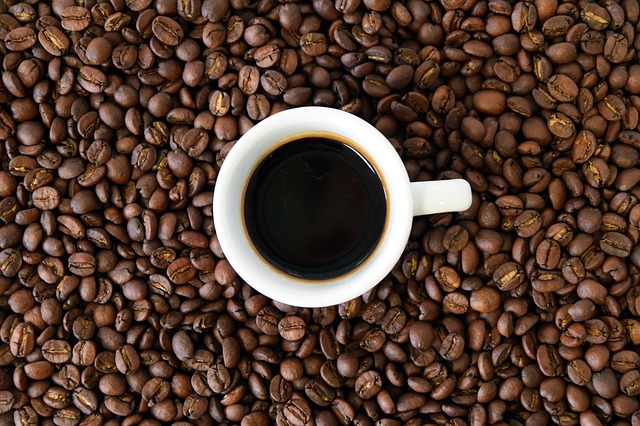INTRODUCTION TO CUPPING COFFEE
Whatever version of the coffee’s origin tale you pick, one truth stays constant: Ethiopia was the country where the beverage was first discovered. It is thought that the usage of coffee expanded from Ethiopia to Egypt and Yemen as a result of Yemeni travelers bringing their newfound knowledge back home with them. Coffee’s growth across the Arab world began with its introduction in Yemen and grew rapidly afterwards.
By the sixteenth century, coffee had become a staple of most Middle Eastern societies, and it could also be found in Turkey and Persia. By this time, coffee was becoming more popular in other parts of northern Africa as well as the Middle East.
Despite the fact that coffee became widely available so fast, it was not until 1670 that it was first brought to India as pure coffee, according to historical records. Prior to 1670, any and all coffee beans that were exported from the Middle East had to be sanitized before they could be sold.
This procedure assured that coffee plants could not be cultivated in any other location. According to legend, a Yemeni Sufi by the name of Baba Budan sneaked coffee seedlings into India by concealing them between his thighs. When he arrived in India, these seeds were planted in a greenhouse and the producing plants were sent to Mysore.
After being smuggled into India, coffee found its way to Italy, where it was eventually exported to Europe, Indonesia, and the United States of America. Italy was the country that performed the most significant role in the introduction of coffee to Europe and the Americas.
Prior to its arrival in Italy, coffee was seen as a beverage reserved for the Muslim population, owing to the significance that it played in religious rites and ceremonies.
Nevertheless, after coffee was introduced into Italy, Pope Clement VIII deemed the beverage to be a permissible beverage for Christians. Following this pronouncement, coffee became more widely available than ever before.
When the British East India Company began exporting coffee to the United Kingdom in the mid-sixteen hundreds, it was considered a breakthrough. From here, coffee swiftly made its way to France, Austria, and Poland, among other countries.
NORTHEAST AMERICA’S LACK OF APPETITE FOR COFFEE
While the consumption of coffee expanded fast across Europe with the pope’s ‘approval,’ the introduction of coffee to the Americas did not go as easily.
Coffee was introduced to colonial period America by the British, although it was much less popular among Americans than it was among Europeans.
Simply said, the fact that alcohol was readily available in North America was the most significant factor in settlers’ disinterest in the new alcoholic beverage. The taste (and probable aftereffects) of consuming alcoholic beverages were highly favoured by the American colonials over the taste of coffee.
It wasn’t until the Revolutionary War, when tea supplies were short owing to the fact that most tea merchants were British, that coffee began to gain in favor. Unfortunately for those who craved coffee during this period, coffee was also in short supply, and when it was available, the prices were prohibitively expensive.
Despite this, the Americans maintained their increasing love for coffee, and during the Boston Tea Party in 1773, they vowed that the British beverage (tea) should be resisted in its entirety as well. This demonstration resulted in a significant rise in the number of coffee consumers in the United States.
The popularity of coffee in Central and Southern America
In North America, as coffee’s popularity began to grow, awareness of the beverage quickly started spreading across Central and South America as well. When coffee was first introduced to the continent of South America, it was quickly realized that the area’s rainforest terrain provided for an ideal setting for coffee plantations.
Following deforestation and forest destruction, the climate in the area, in conjunction with the availability of land, led in coffee being one of the most important cash crops in the region.
Unfortunately, the avarice of coffee plantation owners finally resulted in the rapid destruction of rainforest ecosystems and the relocation of a large number of indigenous peoples around the world. If there is one silver lining to this predicament, it is the fact that some of these nations, who were previously suffering economically, were quickly able to strengthen their economies as a result of the cash generated by their coffee plantations.
STATISTICAL INFORMATION ON COFFEE IN CHAPTER
After looking briefly at the history of coffee and how it spread around the globe, let’s turn our attention to the process of coffee manufacturing. In this chapter, we will not only look at the top coffee growers throughout the globe, but we will also look at just about every single coffee-related statistic that exists!
You will study about coffee production across the world in this chapter, which includes:
Coffee Production by Country Coffee Consumption by Country Coffee Production by Country
Market Research for the Specialty Coffee Industry
COUNTRY-BY-COUNTRY COFFEE PRODUCTION
While a large number of nations have attempted to cultivate coffee throughout the course of history, only a chosen handful have been really successful in doing so. Currently, coffee is grown in 49 nations throughout the world. It is composed of a large number of persons, including 25 million small coffee farmers, who make up this market.
Ironically, according to a massive collection of data from the world’s best coffee producers, Ethiopia, the nation that gave birth to the coffee plant, does not rank first in the production of their native coffee plant. With around 860,000,000 pounds of coffee produced in 2014, Ethiopia was placed fifth in the world in terms of coffee production, however it should be mentioned that they are the top producer of coffee in Africa.
Brazil is the world’s leading producer of coffee, producing 5,985,613,000 pounds per year — more than 5,000,000,000 pounds more than Ethiopia! Following Brazil in terms of coffee exports is Vietnam, which had 3,630,284,000 pounds shipped, Colombia, which had 1,531,200,000 pounds, and Indonesia, which had 904,200,000 pounds.
Aside from Ethiopia, other notable countries involved in the production and export of coffee include India, Mexico, Guatemala, Peru, Honduras, Uganda, the Ivory Coast, Costa Rica, El Salvador, Nicaragua, Papua New Guinea, Ecuador, Thailand, Tanzania, the Dominican Republic, Kenya, and Venezuela, among many others. The combined output of each of these world-class coffee exporters in 2014 was at least 100,000,000 pounds!
COUNTRY-BY-COUNTRY CONSUMERS OF COFFEE
With such massive volumes of coffee being produced and sold throughout the globe, you may be wondering who is really consuming all of it all. Yes, we all like a cup or two of coffee… But who is it that is drinking all of these BILLIONS of pounds of coffee every year?
According to statistics provided in early 2014, the United States is not the culprit…at least not in the majority of cases.
When it comes to daily coffee consumption per capita, the Netherlands comes out on top with 2.414 cups of coffee consumed per person.
Even if we assume that every single person in the country drinks coffee, you may not believe that 2.414 cups of coffee per day is a very big amount, and you would be correct if we assumed that everyone in the country did.
When you take into consideration that this statistic is based on the assumption that everyone in the nation consumes coffee, the figure seems to be a bit higher. Whatever way you look at it, there is no denying that people who live in the Netherlands are passionate about their coffee.
The Netherlands is the world’s second largest coffee consumer, and they outpace the rest of the world by a whopping.566 cups of coffee per inhabitant every day. How does a country come to consume just 1.848 cups of coffee per capita per day explain itself?
Finland. Sweden follows in second with 1.357 cups per capita per day, followed by Denmark with 1.237 cups per capita per day… as well as a long list of others It isn’t until we get to number SIXTEEN that the United States has a negligible influence, consuming.931 cups of coffee per capita per day on the global scale!
Of course, if you look at these numbers while taking the country’s population into consideration, the United States would not seem to be nearly as low on the list! In fact, when looking at only the coffee consumers in the United States, it is estimated that each individual consumes around 3.1 cups of coffee every day!
So,
who is it that comes in at the bottom of the list of countries with the highest per capita consumption of coffee? Nigeria. In terms of coffee consumption per capita, Nigeria comes worst out of all of the nations on the list, with only.002 cups consumed each day!
Strangely enough, coffee industry analysts predict that the world’s consumption of the beverage will soar in the next five years.
SPECIALTY COFFEE INDUSTRY – WHAT IS IT?
Specialist coffee sales are predicted to expand as a result of the anticipated increase in coffee consumption, according to the National Coffee Association. This trend is predicted to have a significant influence on the economy since it is occurring in a sector that is already boosting revenues by 20% per year on average. What type of figures are we talking about here, exactly?
Consider the fact that speciality coffee sales account for around 8% of the total coffee market in the United States. A market with a monetary value of around 18 BILLION dollars! Are you curious about how much money the worldwide sale of coffee generates each year?
Approximately $42.5 BILLION is the answer!
So, where do all of these specialized coffees come from, exactly? There are around 24,000 coffee shops in the United States alone! Coffee shops such as this are responsible for the sales of specialty coffee beverages such as lattes, cappuccinos, and espressos.
The number of specialty coffee shops in the United States would more than double to 50,000 or more if the predicted upward trend in specialty coffee consumption continues as forecasted, according to experts.
Considering that the average price of a single espresso type drink is $2.45 and the average price of a cup of brewed coffee is $1.38, this represents a significant increase in the economy.
Types of Espresso-Infused Hot Drinks Hot Drinks Made with Brewed Coffee THE SPREAD OF COFFEE How to mix gin cocktails




